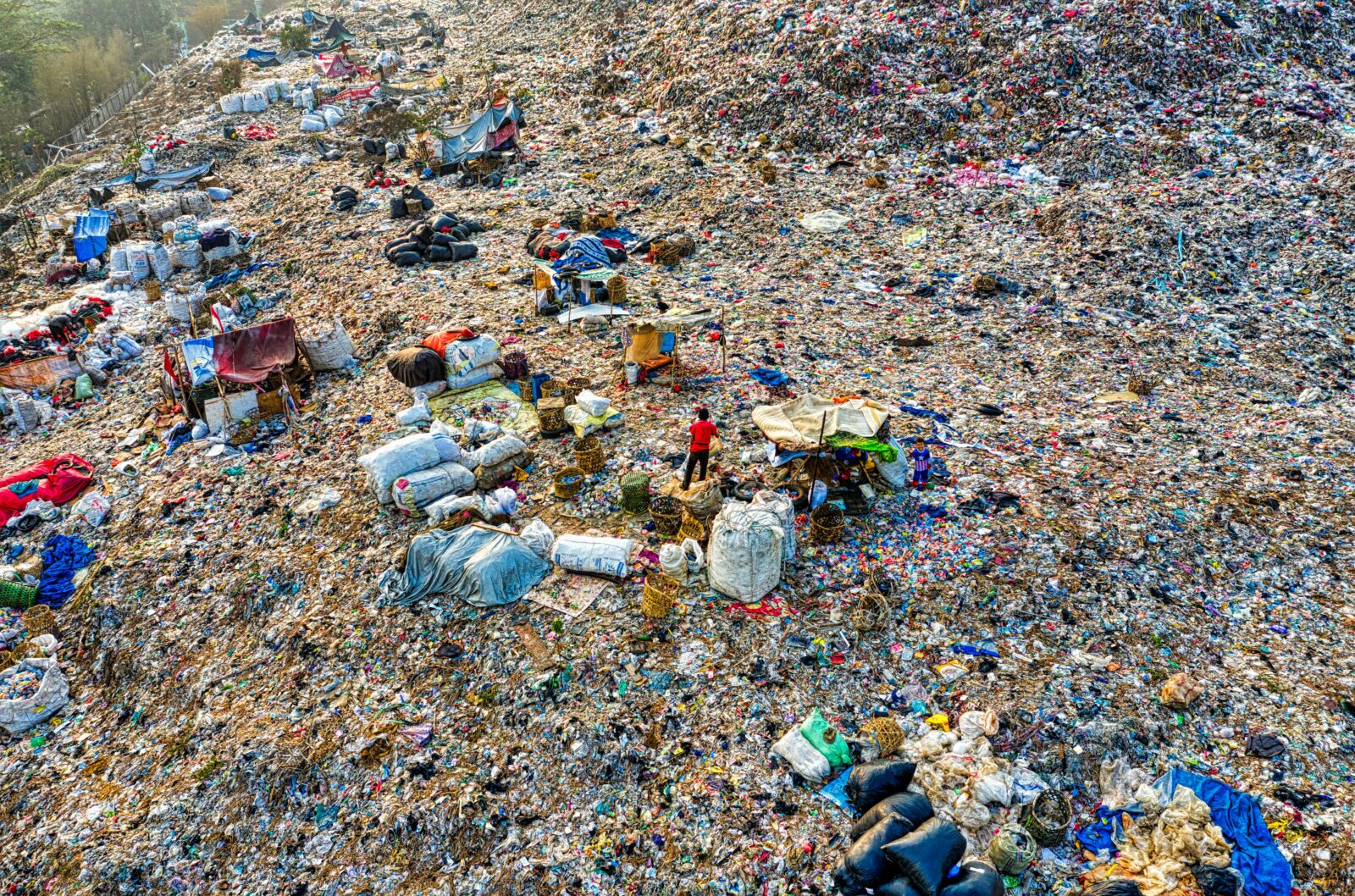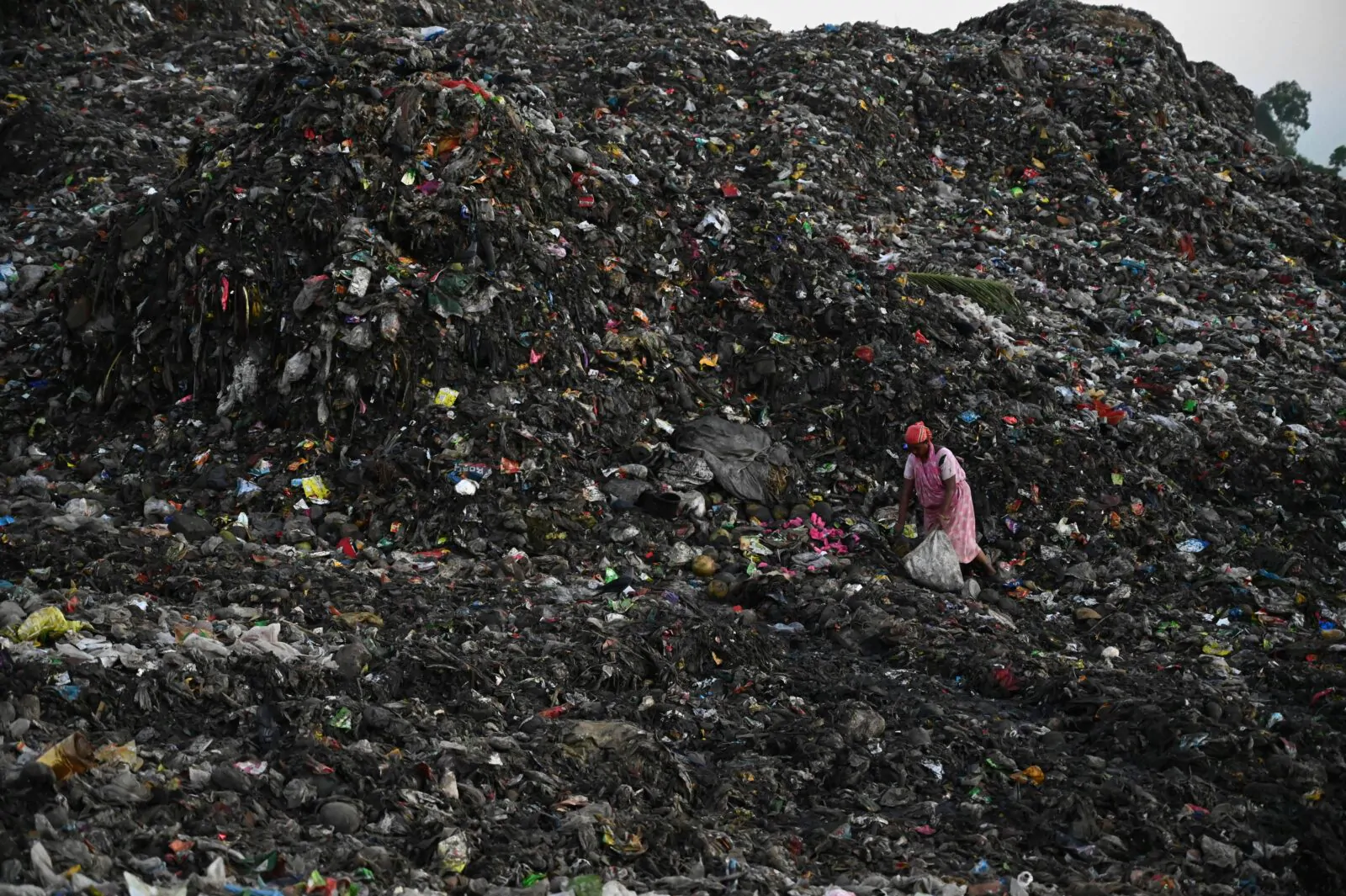Uncovering the Unseen Peril: Methane Emissions from Landfills and Their Environmental Impact

Greenhouse gases (GHGs) have emerged as a pressing environmental threat, disrupting the delicate equilibrium of our planet’s atmosphere. Among these potent gases, methane stands out as a formidable force, trapping heat more effectively than carbon dioxide over shorter timescales. Alarmingly, a significant portion of global methane emissions can be traced back to an often-overlooked source: landfills.
As organic matter decomposes within the confines of landfills, a complex microbial process unfolds, generating methane as a byproduct. This invisible yet pervasive gas seeps through the soil, infiltrating the surrounding air and contributing to the ever-growing greenhouse effect. The magnitude of this issue is staggering, with landfills accounting for a substantial 10% of global anthropogenic methane emissions, amounting to a staggering 50 million metric tons annually.
Landfills are a significant source of methane emissions, which contribute to global warming and climate change. Methane (CH₄) is a potent greenhouse gas with a global warming potential approximately 28-36 times greater than that of carbon dioxide (CO₂) over a 100-year period. According to the Environmental Protection Agency (EPA), landfills are the third-largest source of human-related methane emissions in the United States, accounting for about 15% of total methane emissions in 2019. As organic waste decomposes anaerobically in landfills, it produces methane, which can escape into the atmosphere if not properly managed. This leakage contributes significantly to the greenhouse effect, exacerbating climate change and posing risks to both the environment and public health.
The environmental impact of methane emissions from landfills is multifaceted. Beyond contributing to climate change, methane is also a precursor to ground-level ozone (smog), which can cause respiratory issues and other health problems in humans and animals. Additionally, methane emissions can lead to the displacement of oxygen in the soil, affecting plant growth and soil health. The accumulation of methane in the atmosphere also has the potential to disrupt weather patterns and contribute to extreme weather events. Therefore, reducing methane emissions from landfills is crucial for mitigating these adverse environmental effects.
Despite the gravity of the situation, mainstream emission inventories have consistently underestimated the true scale of methane emissions from landfills. This discrepancy can be attributed to the inaccuracy of the decay constant, a crucial parameter utilized in the widely adopted first-order decay model recommended by the Intergovernmental Panel on Climate Change (IPCC).
Recent atmospheric inversion studies, which employ top-down measurement techniques, have revealed significant biases in these bottom-up inventories, highlighting the urgent need for improved estimation methods.
To address this critical gap, researchers have developed an innovative approach to refine the decay constant estimation method. By incorporating compositional- and environmental-specific corrections, they have successfully integrated these enhancements into the IPCC’s established model. The resulting corrected decay constant values have demonstrated remarkable accuracy when benchmarked against atmospheric inversion results, significantly improving the precision of methane emission predictions.
Extending their analysis to landfills worldwide, researchers have uncovered alarming discrepancies, with some individual landfills exhibiting up to 200% underestimation of methane emissions compared to previous estimates. These findings underscore the urgency of prioritizing landfill methane emission monitoring and reduction strategies as a cost-effective mitigation option to achieve current climate goals.
Methane production in landfills is influenced by a multitude of factors, including the type of waste present, the age of the landfill, oxygen content, moisture levels, and temperature. For instance, gas production tends to peak within five to seven years of landfill operation but can persist for over half a century, highlighting the long-term implications of this issue.
Beyond their contribution to climate change, landfill gases also pose localized challenges. Hydrogen sulfide and ammonia, two prominent constituents of landfill gas, are responsible for the characteristic foul odors often associated with these sites. Short-term exposure to elevated levels of these gases can cause respiratory irritation, coughing, headaches, and nausea, underscoring the need for effective mitigation strategies.
Controlling Landfill Gas Migration

To mitigate the environmental impact of landfill gases, various control measures have been implemented. Upon reaching their maximum waste capacity, landfills are typically capped with a layer of cover material, and gas collection wells are installed throughout the site. These perforated pipes facilitate the vertical movement of gases, preventing lateral migration towards off-site locations and enabling controlled venting, flaring, or energy recovery processes.
For homeowners living in proximity to landfills, the risk of landfill gas infiltration into indoor spaces is a significant concern. Minimizing entry points by sealing cracks and gaps, ensuring adequate ventilation, and in some cases, installing sub-slab depressurization systems can help mitigate this risk and prevent the buildup of harmful gases indoors.
While traditional landfill gas management practices have been implemented, researchers continue to explore innovative approaches to optimize methane capture and utilization. Techniques such as leachate recirculation, temperature control, and waste composition optimization have shown promising results in enhancing the efficiency of anaerobic digestion processes, potentially leading to improved methane recovery and reduced emissions.
As the urgency to address methane emissions from landfills grows, so too does the need for accurate monitoring and measurement techniques. Recent advancements in atmospheric monitoring, including the use of satellite and aircraft-based observations, have provided unprecedented insights into methane emission hotspots, enabling targeted mitigation efforts and informing more robust emission inventories.
Recognizing the significance of this issue, various regulatory frameworks and policy initiatives have been implemented to address landfill methane emissions. International agreements, such as the United Nations Framework Convention on Climate Change (UNFCCC) and the Paris Agreement, have established targets and guidelines for greenhouse gas reduction, with specific provisions for landfill gas management.
Beyond environmental considerations, economic incentives and co-benefits have emerged as driving forces for landfill methane mitigation. Landfill gas-to-energy projects, which capture and utilize methane for electricity generation or heating purposes, offer financial advantages while simultaneously reducing greenhouse gas emissions. Additionally, the potential for carbon credits and the co-benefits of improved air quality and odour reduction further incentivize the adoption of effective landfill gas management strategies.
Suggested Reading: What problems can monsoons cause in India?
Utilizing Methane Production Positively: New Technologies
Fortunately, advancements in technology offer promising solutions for capturing and utilizing methane from landfills, turning a significant environmental challenge into an opportunity for sustainable energy production. One of the most effective methods is the implementation of Landfill Gas to Energy (LFGTE) systems. These systems capture the methane produced during the decomposition of organic waste and convert it into electricity, heat, or renewable natural gas. According to the EPA, there are over 560 operational LFGTE projects in the United States alone, collectively generating approximately 2,000 megawatts of electricity annually, which is enough to power nearly 1.5 million homes.
In addition to electricity generation, captured landfill methane can be purified and upgraded to pipeline-quality renewable natural gas (RNG). This RNG can be used as a direct replacement for conventional natural gas in residential, commercial, and industrial applications, as well as a cleaner alternative to diesel fuel in transportation. For instance, Waste Management, a leading waste disposal company, has several RNG projects that convert landfill gas into fuel for their fleet of waste collection vehicles, significantly reducing their carbon footprint.
Another innovative technology is the use of anaerobic digesters, which can be integrated into landfill sites. These digesters enhance the decomposition process of organic waste under controlled conditions, increasing the efficiency of methane production and capture. The biogas produced can then be used in combined heat and power (CHP) systems, providing both electricity and thermal energy. This not only reduces methane emissions but also supports the circular economy by converting waste into valuable resources.
Conclusion: A Call to Action
The issue of methane emissions from landfills represents a hidden yet significant threat to our environment, one that demands immediate attention and concerted action. By refining estimation methods, prioritizing monitoring and measurement, implementing innovative mitigation strategies, and fostering international collaboration, we can address this challenge head-on.
Ultimately, tackling landfill methane emissions is not merely an environmental imperative but a responsibility we owe to future generations. By embracing sustainable waste management practices and embracing the principles of a circular economy, we can pave the way for a more resilient and sustainable future, where the hidden perils of landfill gases are effectively mitigated, and our planet’s delicate balance is preserved.


